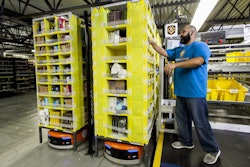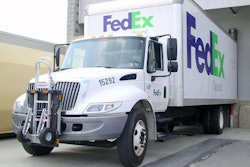 Moseley speaking at the 2015 CCJ Fall Symposium.
Moseley speaking at the 2015 CCJ Fall Symposium.How can carriers protect their independent contractor business model when the current administration at the federal level wants every driver to be an employee and every employee to be a union member?
That’s the question Rob Moseley, a partner with Smith Moore Leatherwood, who heads the firm’s Transportation Industry Group, took on during CCJ’s Fall Symposium in Scottsdale, Ariz., this week.
“There are 300 government agencies charged with making your life miserable when it comes to independent contractors,” Moseley said. “You can only win in one way but you can lose in 300 different ways.”
The bottom line, Moseley said, is that the government makes more money on employees than on independent contractors because independent contractors typically pay taxes on very little income. To try and recoup those dollars, “the government is coming after smaller companies first,” Moseley said. “They are going after people who are doing it all wrong. They are making laws against terribly managed companies and will eventually use it against larger companies.”
There is a lot of coordination between the Department of Labor and the Internal Revenue Service, he said. “If you get a visit from one, you’ll get a visit from the other.”
Moseley recommends carriers aggressively manage the processes they use with their independent contractors, especially in some key areas:
Who has the Right to Control? This is a test the government uses to determine whether someone is an employee for worker’s comp purposes. The test includes asking who furnishes equipment (even down to telematics) and whether the company has the right to fire. Independent contractors must work by the job, not by the hour. Paying by mile is acceptable, Moseley said, but suggested a better alternative is to pay by percentage or by price per load. If an independent contractor has occupational accident coverage, Moseley recommends buying contingency coverage to protect your company.
 The employee vs. contractor debate has been prominent for drayage carriers at West Coast ports in recent years.
The employee vs. contractor debate has been prominent for drayage carriers at West Coast ports in recent years.Is the worker integral to your business? One criteria is whether the worker has a special skill. Historically, the requirement that drivers must have a commercial drivers license has been used to show special skill. “But there are courts that say these are just laborers and thus, employees,” Moseley said. To be in compliance, carriers can’t make independent contractors wear uniforms or force them to take loads. Some carriers have gone to internal load boards so independent contractors can choose their own loads, Moseley said.
Do you have a solid lease agreement and do you enforce it? The conventional wisdom used to be that you had to have 1,000 trucks to be a target of the Owner-Operator Independent Drivers Association for leasing practices, but recently there was a case with eight trucks, Moseley said. His two top recommendations? 1. Have a valid lease agreement that meets all of the requirements. It must include: Who will pay for medical and drug/alcohol exams? How often will you inspect trucks? (This is especially important under CSA). What will you do with passengers? Will you allow pets? 2. Follow the agreement in how you treat your drivers. Your processes must match what the lease says.
A few more tips Moseley offered:
- Draw as many distinctions as you can from employee drivers; don’t have independent contractors attend the same safety meetings or have the same bonus programs.
- Allow for trip leases
- Allow them to refuse loads
- Do not give them a safety manual or policy manual because that should all be in the lease agreement
And when it comes to lease-purchase agreements, “the main thing you have to deal with is portability,” Moseley said. “To be successful, you have to allow that independent contractor to take that truck and lease it on with another carrier. That’s the hardest thing for carriers to deal with.” But on the plus side, it rarely happens, he said. “Usually if they leave you they leave the truck, too.”












